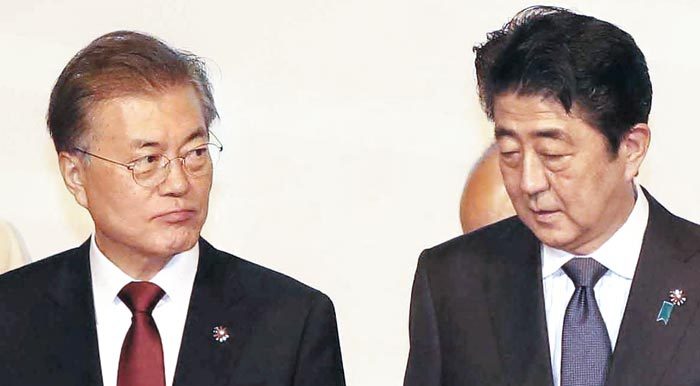As Japan lowers Korea’s trade status, Seoul announces W5tr plan to boost materials capacity
S. Korea plans to develop key industrial materials to reduce reliance on exports from Japan
By Yeo Jun-sukPublished : Aug. 28, 2019 - 18:09
With the effectuation on Wednesday of a Japanese government resolution effectively downgrading South Korea’s trade status, the Korean government pledged to spend 5 trillion won ($4.1 billion) to increase its own capabilities in the development of key industrial materials.
President Moon Jae-in’s office, Moon’s governing Democratic Party and relevant government agencies announced a comprehensive research and development strategy to reduce the country’s reliance on Japanese materials.
According to representatives of all three sides, the massive R&D investment will take place starting next year and last until 2022. By the end of this year, more than 100 materials will be selected as the initial investment targets.
“Through strategic investment in R&D and innovation in the manufacturing process, we will reduce external reliance,” the Ministry of Science and ICT said in a statement. “Japan’s export curb will turn out to be a blessing in disguise (for our economy)”

The measures came after the Japanese government proceeded with its plan to lower Korea’s trade status. Japanese manufacturers now must apply for approval for each export contract involving strategic materials, rather than going through the simpler checks granted to preferential trade partners.
Since Japan announced the decision two months ago, Korea has taken its own measures to retaliate against what it sees as a violation of free trade principles. These included a tit-for-tat downgrade of Tokyo’s trade status for Korea as well as various steps to reduce Korea’s reliance on Japanese exports -- for example, extending subsidies to parts and materials industries that need assistance.
While the government has yet to announce which materials are to be included in the 100, officials said they would focus on the country’s key industries such as semiconductors, electronics, displays, chemicals and automobile manufacturing.
“Right now, our focus is more on maintaining original strength, rather than developing future capability,” Kim Seong-soo, who is in charge of technology innovation at the ICT Ministry, said at a meeting with reporters Tuesday to brief them about the government’s plans in advance.
“At some point in time, I think our country began to assume that the major industries of our nation such as the semiconductors or displays would have their own backs, and that the government does not need to worry.”
Instead, the government will be taking a “tailored approach” to research and development, upon which the country’s technological prowess depends.
Raising the bar for domestic industries will take precedence over taking technologies abroad, the ministry explained.
In announcing the massive R&D investment, the government also presented measures to support the companies affected by Japan’s export restrictions. These include extending the maturity date of government loans, providing liquidity and accelerating customs clearance processes.
The government also vowed to create a joint organization with private entities to improve the management of key industrial materials. The organization will belong to a special advisory committee under the presidential office.
(jasonyeo@heraldcorp.com)








![[Graphic News] More Koreans say they plan long-distance trips this year](http://res.heraldm.com/phpwas/restmb_idxmake.php?idx=644&simg=/content/image/2024/04/17/20240417050828_0.gif&u=)
![[KH Explains] Hyundai's full hybrid edge to pay off amid slow transition to pure EVs](http://res.heraldm.com/phpwas/restmb_idxmake.php?idx=644&simg=/content/image/2024/04/18/20240418050645_0.jpg&u=20240419100350)





![[From the Scene] Monks, Buddhists hail return of remains of Buddhas](http://res.heraldm.com/phpwas/restmb_idxmake.php?idx=652&simg=/content/image/2024/04/19/20240419050617_0.jpg&u=20240419175937)

![[KH Explains] Hyundai's full hybrid edge to pay off amid slow transition to pure EVs](http://res.heraldm.com/phpwas/restmb_idxmake.php?idx=652&simg=/content/image/2024/04/18/20240418050645_0.jpg&u=20240419100350)

![[Today’s K-pop] Illit drops debut single remix](http://res.heraldm.com/phpwas/restmb_idxmake.php?idx=642&simg=/content/image/2024/04/19/20240419050612_0.jpg&u=)